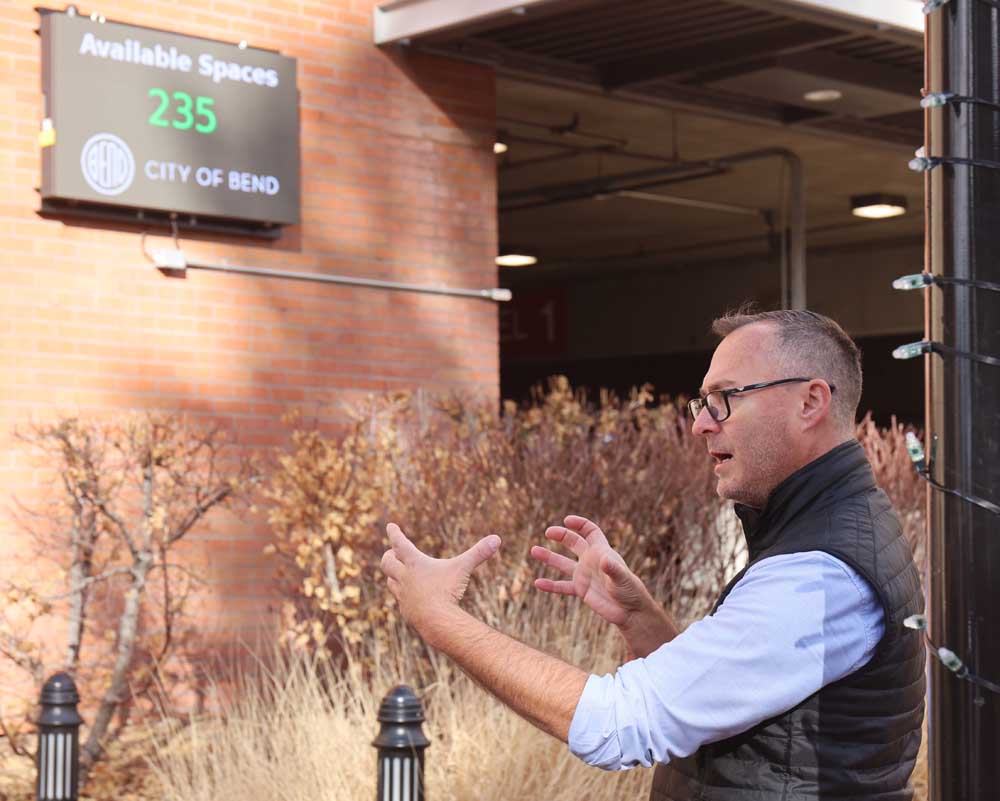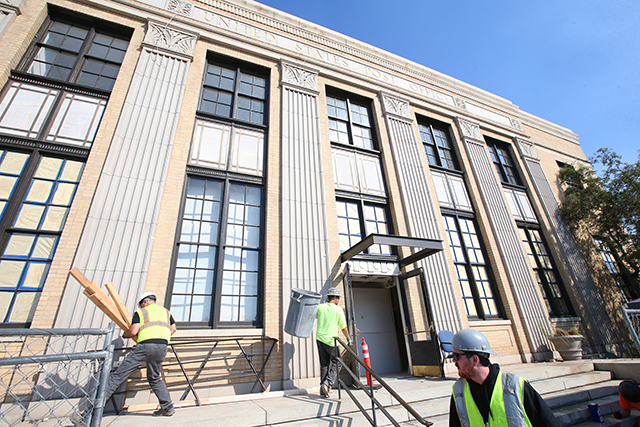Tired of hunting for a parking spot in downtown Bend? New parking signs could help.
Published 5:45 am Wednesday, December 6, 2023

- Tobias Marx, parking services division manager with the city of Bend, discusses the new digital parking sign technology while at the parking garage Tuesday in Bend. The digital signs will now direct drivers toward empty parking spots in downtown Bend as a part of a city effort to minimize circular, spot-searching traffic and greenhouse gas emissions.
Digital signs that direct drivers toward empty parking spots in downtown Bend made their debut Tuesday as a part of a city effort to minimize circular, spot-searching traffic and greenhouse gas emissions.
While it’s ideally a solution to an experience that can be a source of frustration for drivers, some downtown business owners believe the change are overcomplicating a well-established parking system.
Trending
And some feel the change has taken away some of downtown’s charm.
The twinkling lights, banners and illuminated snowflakes that are the pride of the Downtown Bend Business Association in the winter will look a little different while merchants adjust to the digital sign system, said Shannon Monihan, the association’s executive director.
“We were affected,” she said. “All of our beautiful, soft canopy lights got cut out.”
Multiple new signs are now placed throughout downtown Bend: one on each end of the downtown area, one in front of the Centennial Parking Garage and a few doughnut-like signs that wrap around lamp posts. Each displays the number of available nearby parking spots.
Two signs, one on Bond Street and one on Wall Street, welcome drivers as they enter downtown. They list the number of available parking spots in each city-owned parking lot, the parking garage and on the street. Seven circular signs are wrapped around lampposts along Brooks Alley and Bond and Wall streets. Those show the number of available spots in a given direction with corresponding arrows.
All of the signs will show the number of available parking spots in green if there are plenty of spots, yellow if spots are becoming scarce and red if no spots are available.
Trending
The signs rely on sensors attached to streetlights throughout downtown that take images every few seconds, said Tobias Marx, Bend’s parking services manager. Artificial intelligence then analyzes those images, and communicates the number of unoccupied parking spots in a given area to the cloud-based digital-sign system. The system comes from German-based company Cleverciti Systems, which is subject to stricter privacy laws because of its German and European origin, and the images are deleted within seconds, Marx said. No personal identifying information is retained, he said.
The technology is able to support parking enforcement and permit parking, but it doesn’t operate that way currently, Marx said.
There is an additional sign at the entrance to the downtown parking garage, which relies on the entry and exit gates to track the number of available spots.
The new system, which cost more than $300,000 plus around $119,000 in annual software maintenance costs, is completely financed through the city’s parking fund. That consists of parking citations, monthly parking subscriptions and daily parking fees, according to the city.
Because the sensors and signs had to be installed on streetlights and lampposts, there are some aesthetic differences downtown that Monihan said have caused unforeseen impacts.
Monihan said the association has lost around $18,000 worth in potential advertising revenue because the new sensors and signs on lampposts have taken up real estate usually reserved for banners highlighting local events and culture. It’s the association’s primary revenue source, she said. Plus, those same sensors and signs took precedent over the year-round lights in the canopy trees lining downtown streets, she said.
Stewart Fritchman, the owner of Bellatazza, a more than 20-year-old coffee shop on Bond Street, suspects the system will only cause more confusion for drivers.
He also fears drivers will become distracted in their attempts to see the signs.
The goal is to encourage people to enjoy the beauty and magic of downtown Bend, which can’t be experienced anywhere else in the city, he said, but the new system detracts from that goal. The system is solving a problem that doesn’t exist, he said.
“We’ve achieved nothing,” Fritchman said.
However, Marx maintains that the new system is a concerted shift toward progress. Data gleaned from the new signs and sensors will allow the city to analyze how many people are parking downtown, where they are parking and for how long. All told, the desired outcome is to reduce traffic and congestion, greenhouse gas emissions and frustration with parking in downtown Bend, Marx said.
“It really helps us to manage parking more actively,” Marx said, “instead of being so reactive.”
After the winter season, and after the new system is in place for a few months, Marx said the city intends to collect feedback from the community on how the system is working.








